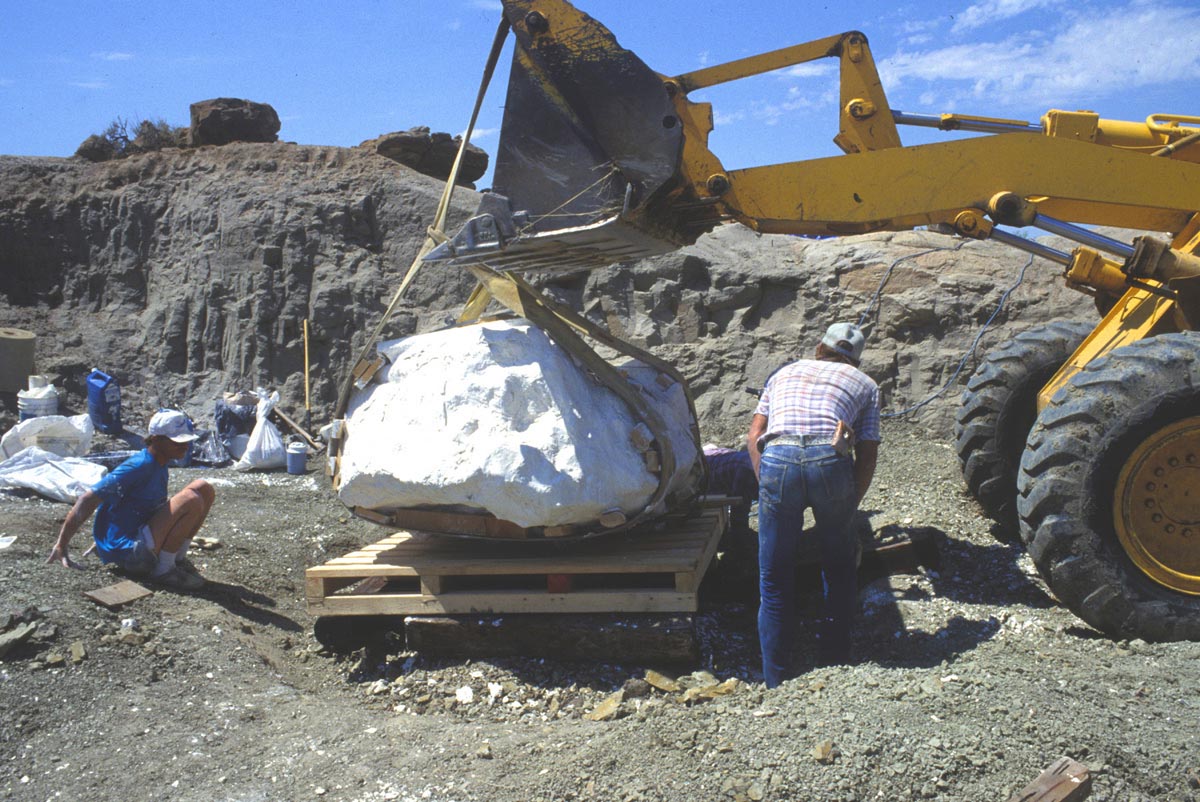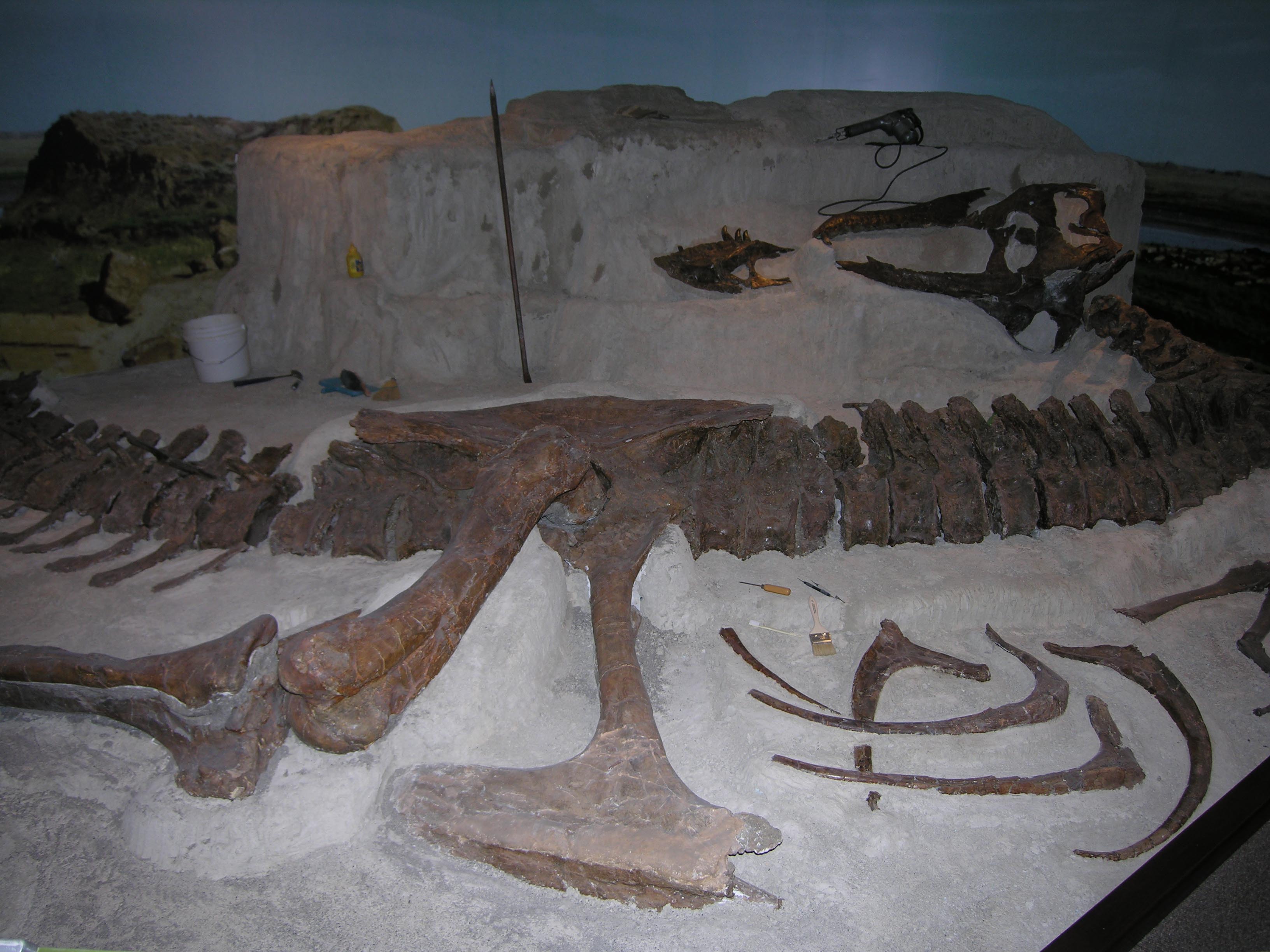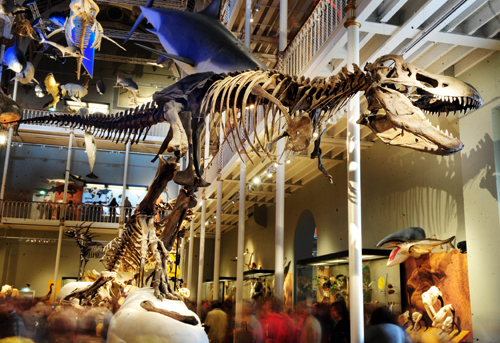It is 65 million years since T.rex actually walked the earth, but the National Museum of Scotland’s acquisition brings people as close as possible to appreciating the scale and power of the real thing. Our cast has been taken from one of the most complete T.rex specimens in the world, which is held in the Museum of the Rockies.
The T.rex is the centrepiece of the Animal World, a spectacular array of creatures from the past and the present day, including a great white shark, a hippo and a Triceratops, among many others. T. rex peers out into the Museum’s Grand Gallery, and draws people through into the Natural World galleries, which tell the story of the formation of the earth and evolution of life on our planet. Find out more about our T.rex in our Explore section on the website.
The T.rex was discovered by Kathy Wankel in 1988, and excavated by one of my Museum of the Rockies field crews in 1990. It was excavated on the east side of Dry Arm, a north-south trending portion of Fort Peck Reservoir located in eastern Montana. The arm of the T.rex was initially discovered by Kathy Wankel. She brought it to the Museum of the Rockies, and I identified it and sent out a field crew to search for it.
When it was determined that it was a relatively complete skeleton I organized a field excavation crew that undertook the excavation during July of 1990. Twelve highly skilled paleontologists excavated the specimen that one month.

Montana is a great place to find dinosaurs because the right age rocks (those that encase dinosaurs) are exposed at the surface of the ground, and many rivers cut through these sediments making it easy to find dinosaur remains.

When the T.rex was being excavated the plaster jackets had a total weight of about 12,000 pounds – that is probably about twice what the living animal would have weighed!

Using bone histology studies we have determined that the T.rex died at an age between 16 and 18 years but we don’t know if it’s a male or female. It died violently, as evidenced by its opisthotic neck (the spine was found with a hyperextended posture due to central nervous system spasms that cause can cause extreme postures prior to death, see Marshall and Padian, paleobiology). When it was found, it was the largest and most complete T.rex ever found. It is now the second most complete, and is tied with the Sue skeleton for the largest ever found.

